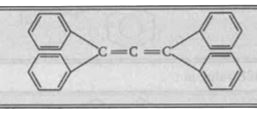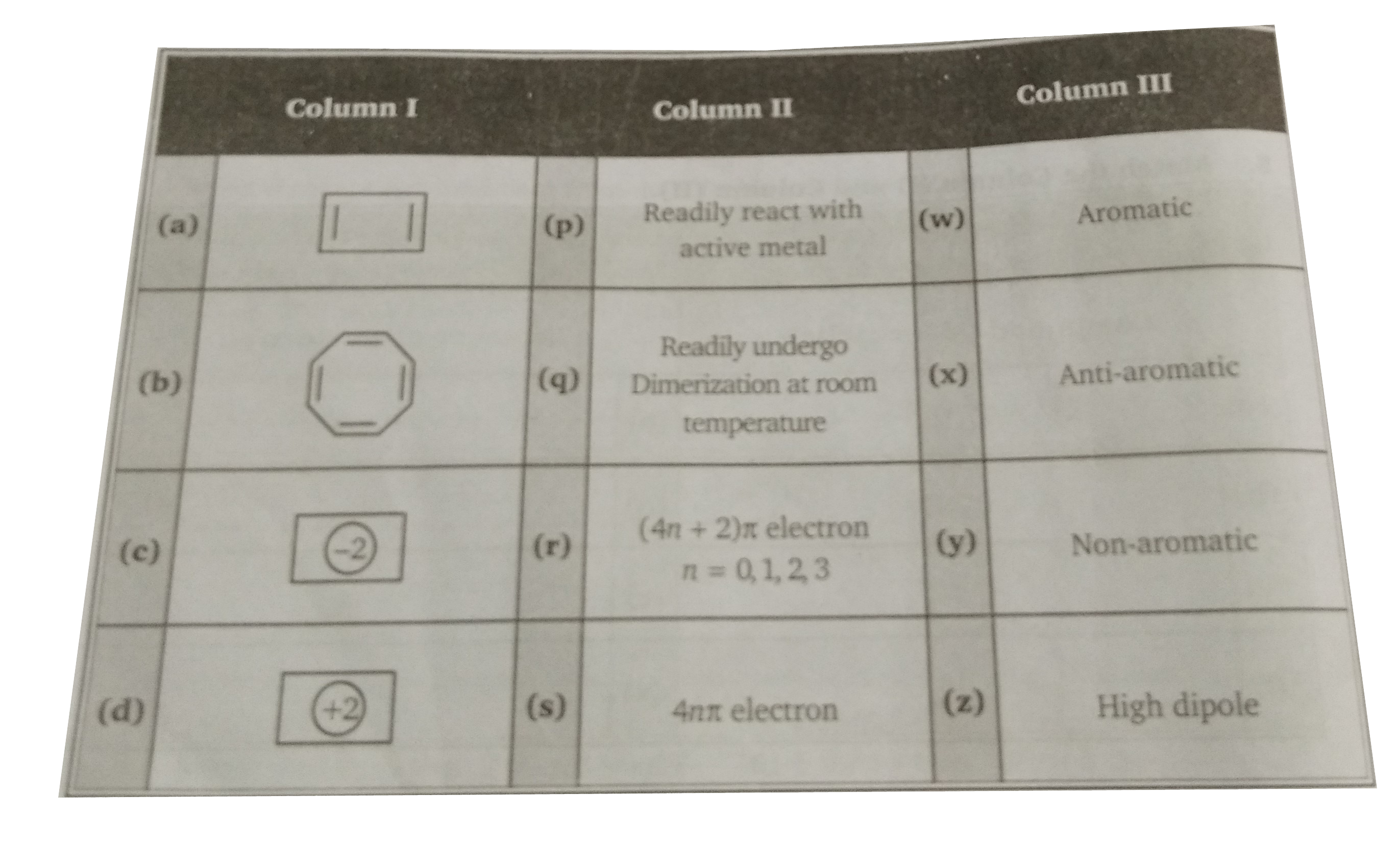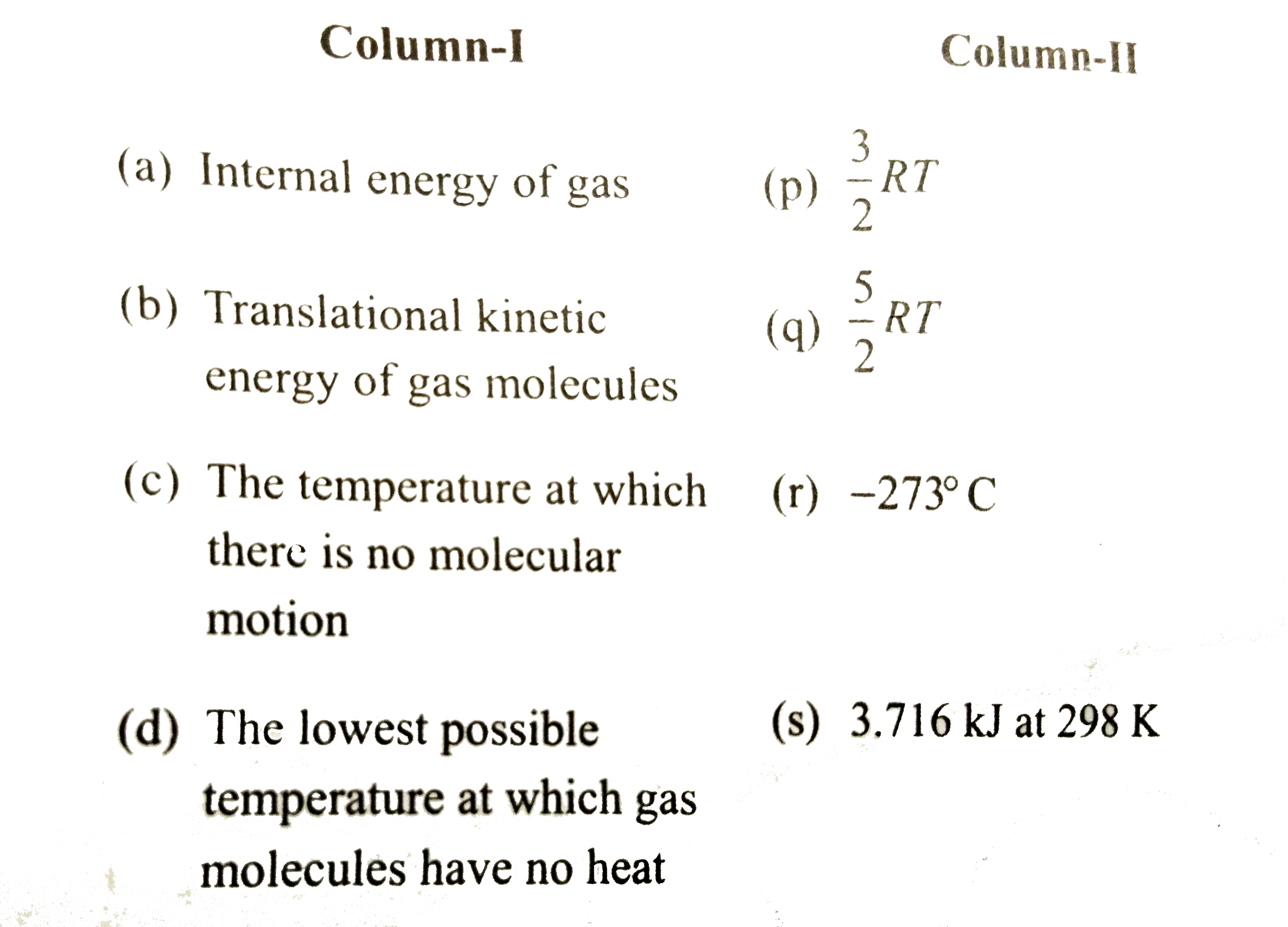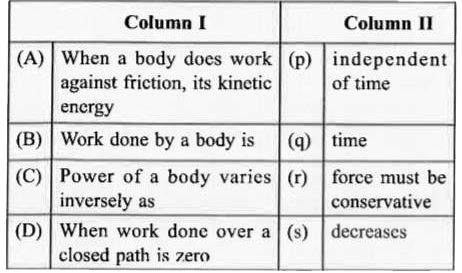Match the column I and II. (Matrix)
 Solution in Kannada
Solution in Kannada
The correct Answer is:
As shown in fig. the relation of dipole moment to configuration is quite direct. If in a 1, 2 -disubstituted alkene (XCH = CHY) X and Y are both electron donating or both electron withdrawing, the dipole moment of the cis isomer will generally be sizeable, whereas that of the trans isomer will be small or zero (i.e. ). If, on the other hand, X is electron donating and Y is electron withdrawing, or vice versa, . . In tribustituted alkenes XCH = CYZ the situation is less clear cut, though if Z is alkyl and X and Y are halogen or other strongly electron withdrawing groups, the disposition (cis or trans)

of X and Y will be decisive. Except for the case of cyclooctene, configuration can be inferred from dipole moment where known, though in some cases the differences are perhaps uncomfortably small. In the case of 1-chloro-2-iodoethylene the original, seemingly unreasonable order of dipole moments was later reversed. In trans-cyclooctene, the normal symmetry of trans-XCH = CHX is reduced to at most , therefore the compound can have a dipole moment, whereas compounds of symmetry cannot. That the moment is so large may be related to the highly twisted nature of the double bond (torsion angle between and )
Dipole Moments and the Dipole :
As for as the question is concerned, melting point of (trans > cis)because trans form is more symmetrical than cis form.
Topper's Solved these Questions
- BOOK - MS CHOUHANCHAPTER - GENERAL ORGANIC CHEMISTRY EXERCISE - LEVEL - 2 (SUBJECTIVE PROBLEMS )13videos
GENERAL ORGANIC CHEMISTRY
- BOOK - MS CHOUHANCHAPTER - GENERAL ORGANIC CHEMISTRY EXERCISE - LEVEL - 2 (SUBJECTIVE PROBLEMS )13videos
GENERAL ORGANIC CHEMISTRY
- BOOK - MS CHOUHANCHAPTER - CARBOXYLIC ACID AND THEIR DERIVATIVES EXERCISE - LEVEL-2( SUBJECTIVE PROBLEMS)1videos
CARBOXYLIC ACID AND THEIR DERIVATIVES
- BOOK - MS CHOUHANCHAPTER - GRIGNARD REAGENTEXERCISE - Level-2 (Subjective Problems)6videos
GRIGNARD REAGENT
Similar Questions
How many 2∘ carbon in the following ?
 03:08View Solution
03:08View SolutionHow many 2∘ carbon in the following ?
 05:36View Solution
05:36View Solution
(Y) is including stereoisomers. Value of (X+Y) will be05:10View Solution
How many geometrical isomer of (X) is possible ?View SolutionMatch column I with column II and select the correct option from the given codes.
ColumnICOlumnIIA.Glycolysis(i)Inner mitochondrial membraneB.TCAcycle(ii)Mitochondrial matrixC.ETS(iii)CytoplasmView SolutionMatch the Column (I) and Column (II). (Matrix)
 View Solution
View SolutionMatch the Column (I) and Column (II) , (Matrix )

 02:50View Solution
02:50View SolutionMatch the column (I) and column (II). (Matrix)
 View Solution
View SolutionMatch the column (I), column (II) and column (III).(Matrix)
 02:24View Solution
02:24View SolutionMatch the column (I), Column (II) and Column (III) . (Matrix)
 05:13View Solution
05:13View SolutionMatch the column (I), (II) and (III). (Matrix)
 View Solution
View SolutionMatch the Column -I with Column-II
 06:40View Solution
06:40View SolutionMatch the column I with column II.
 View Solution
View SolutionMatch column I with column II and select the correct option from the given codes. {:(Column I,COlumn II),(A."Glycolysis",(i)"Inner mitochondrial membrane"),(B.TCA "cycle",(ii)"Mitochondrial matrix"),(C.ETS,(iii)"Cytoplasm"):}
04:51View SolutionMatch the Column I with Column II.
 05:27View Solution
05:27View SolutionMatch the column-I and column-II
06:22View Solution
